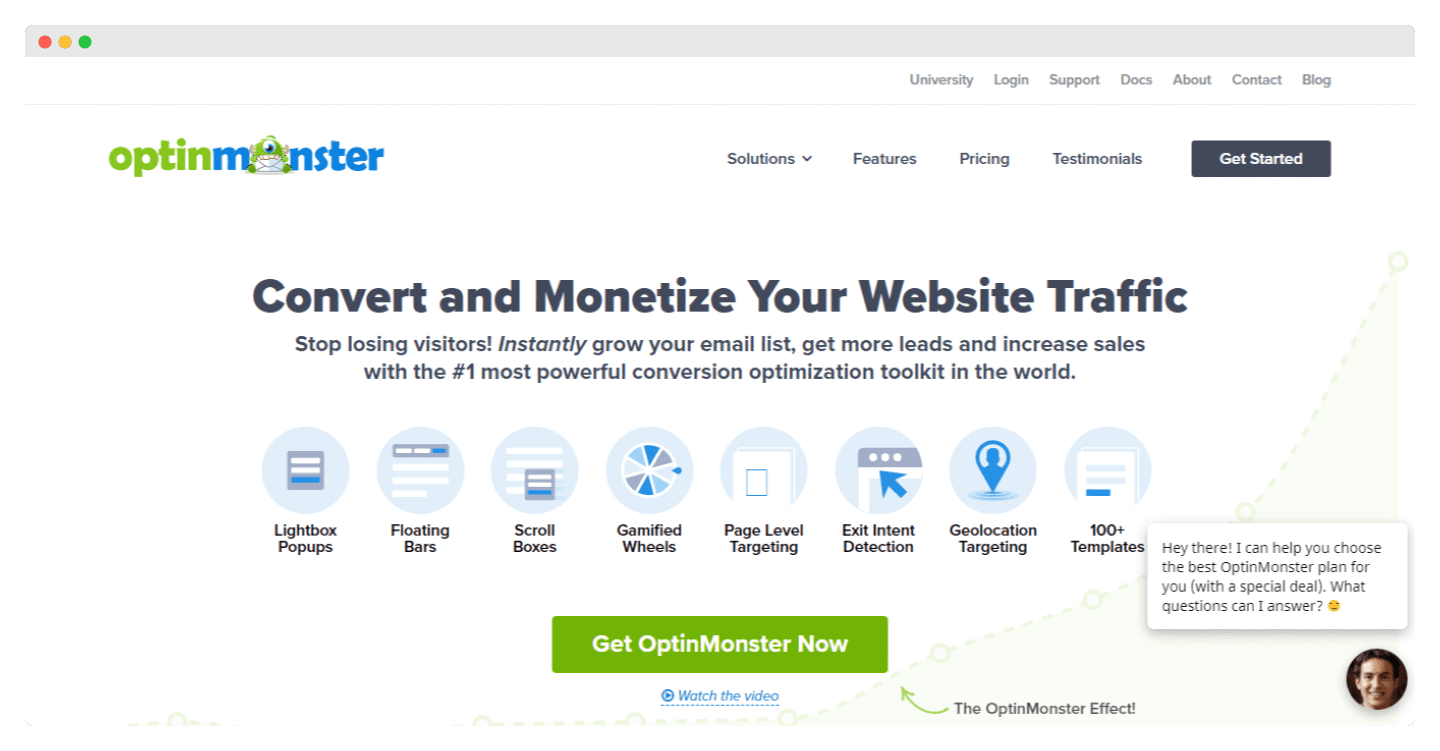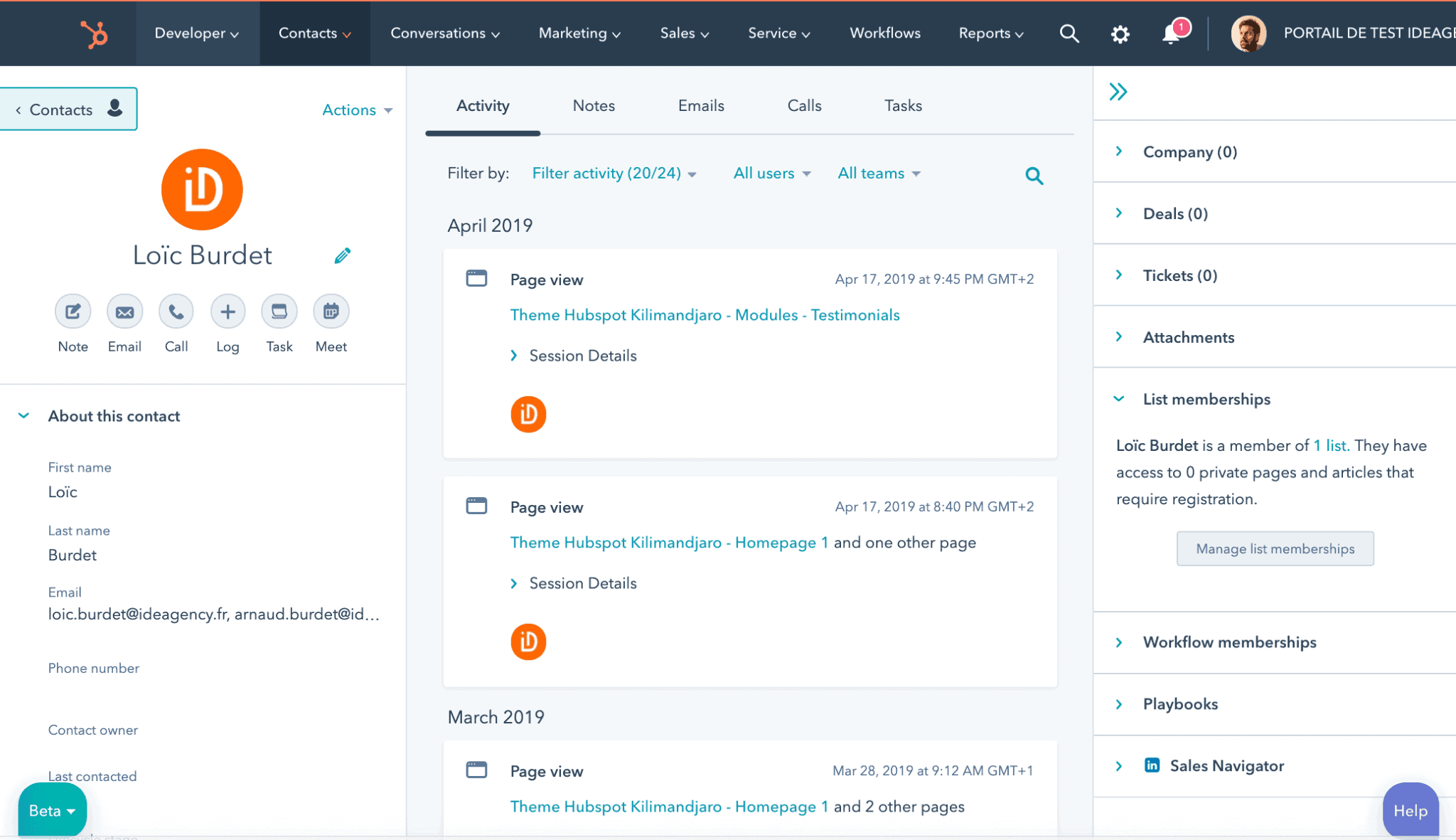The lead sheet is the main working tool of your sales teams. Designing a good lead sheet to facilitate access to key information and speed up sales interactions can significantly improve performance across an organisation.
While it may seem a little long and complex, by choosing the right information and using the right tools, making good lead sheets can help your sales strategy take off.
What is a prospect file? What data should be included and where can you find it? What tools should you use to build and manage your prospect files?
We explain everything in this article.
Sommaire
Prospect sheet: Definition and uses

Prospect sheet: a simple definition
Definition
In its most common use, the prospect file is a document containing all the information that is useful to the sales teams about a prospect. The aim is to provide an overview of all the available and actionable information on a given prospect during sales exchanges.
Prospect sheet VS prospect file
The prospect file contains information on a single prospect, whereas in a prospect (or customer) file, you have a list of information on several customers that you have classified by criteria.
The important point is that there is a notion of visualisation and direct use of data in the case of the file (and not the file). The prospect file is therefore :
- Prospect file data for a single prospect
- But also the formatting of this data on a document (usually a web page on your CRM software) to access the information quickly and easily.
Attention
Those who tell you that the lead sheet is a marketing tool have probably not understood the concept of data visualisation.
In marketing, we almost never work on the scale of an individual prospect or customer, we only work with segments (groups of customers or prospects). However, the notion of a prospect file clearly refers to an individual prospect. It is therefore a sales tool, not a marketing tool at all. The distinction is fundamental.
What makes a good prospect sheet?
Of course, each organisation has its own criteria for evaluating a good prospect sheet, but there are a few things that are essential:
- Data accessibility: It is not simply a matter of listing all your prospects’ interactions with your company without any prioritisation, which would be completely sterile. The data must be structured, organised, and prioritised in a way that allows readers (SDRs & Account Managers) quick and easy access to the information.
- The usefulness of the data: It may seem obvious, but the lead sheet is used by your sales people who make phone calls and send emails, and drowning them in a lot of unusable data is counterproductive. The data included in the lead sheet should be carefully selected, and should all inform a behaviour or action.
- Data Quality: Data Quality refers to the ability of an organisation to have and maintain viable data. More broadly, quality data includes being complete, accurate, consistent, valid and available. We tell you more here: Data Quality – Definition & best practices in B2B marketing
- Ease of updating: Even with the best data quality and enrichment processes in your CRM, you are bound to have problems updating data. Allowing your sales teams to update a prospect’s file simply means that the information collected manually is not lost.
Prospect sheet: What data to feed it?
The first fundamental distinction to be made is between the prospect himself – the person, the human being – and the company he or she represents.
Next, we can categorise the prospect data into 4 main families:
1. The company’s qualification information
The challenge is to determine whether the company belongs to your ICP (Ideal Customer Profile), i.e. whether it is the type of organisation on which you wish to invest your sales and marketing efforts, over a given period of time.
Going further
We tell you everything about how to create an ICP (Ideal Customer Profile) and the difference between ICP and Buyer Persona in B2B marketing.
This is the fairly standard qualification information such as :
- Number of employees
- Revenues and results
- Number of establishments and/or franchises
- Location and size of offices
- Known competitors, suppliers, customers, partners etc. and their status in relation to you.
More specific information or business signals can also be added such as :
- Tools used – e.g. CRM, or CMS used
- Capital operations (mergers, acquisitions, fundraising, etc.)
- Composition of the teams
- Relative growth of teams
And you can even define your KPI according to a very specific data point, such as whether or not you have an internationalisation project, or whether you have a telephone number on your website, or whether you recruit more than 10 different technical profiles, etc.
This qualification data can be binary (Yes/No) or more linear. For example :
- Less than €1M turnover,
- Between 1 and 10M€ of turnover,
- Between €10 and €50 million in turnover,
- More than €50M in turnover
In all cases, it is important that the customer record should contain as much standardised information as possible to make it easy to read. For example, for turnover, use ranges to situate the company rather than exact figures.
2. Transactional information
The sales history of a target organisation is fundamental in helping your sales teams identify the right opportunities.
If it is a customer account that has been in existence for several years, the prospect (or customer) file can include the history of all purchases made by the company, but above all the various elements that allow the conversation to be structured:
- Category of products or services purchased
- Commercial transactions or discounts applied to purchases
- Exchanges with the customer support service
There is no need to include all email, phone, chat, etc. The challenge is to provide actionable information. For example,
- Date and nature of the last interaction with customer support. A quick look will allow your sales team to validate that the problem has been solved (or not)
- Active commitments (subscriptions, ongoing contracts, etc.)
- Date and nature of the last order
3. Personal and contact information
Attention
Personal data has been strictly regulated by the GDPR since 2018, so be careful to keep only the personal data you absolutely need.
The gender, religious orientation, last trip, number of children, marital status, or interests of your prospects are of absolutely no commercial use.
Focus on (professional) contact data, and on what can help you sell.
Furthermore, in the case of complex sales, a target company has several prospects (buying committee). The position and role of each prospect in the buying committee is obviously a fundamental element of the prospect file. Take the time to study the following information:
- Position in the company
- Elements such as seniority, (supposed) weight in the organisation, etc. can also be very valuable, even if they are necessarily left to the qualitative appreciation of each individual…
- Common relationships and commonalities – alumni of the same school, from the same city, etc. This is generally referred to as an “icebreaker” in prospecting
- Personal history with the company (worked there, was a customer in another company, etc.)
4. Behavioural information
This refers to your prospect’s behaviour individually (and not necessarily on behalf of their company).
This is where you can include all the information about responsiveness to your prospecting campaigns,email marketing campaigns, web pages visited on your website, declared interests, white papers or resources downloaded, etc.
Where can you find the data for your prospect file?
1. Start with the data your prospects give you voluntarily
There are two reasons for this:
- A priori, if the business relationship is serious, they will be fair, and deemed useful to the business relationship by the prospect – so they are fundamental to you.
- The easiest and cheapest way to get information is always to ask.
Forget all the pseudo-growth hackers’ tricks that teach you how to get the marital status of your prospects’ grandfather. It’s useless, invasive, and often costs more than asking for a mobile phone number.
To obtain data on your prospects, start by connecting your collection forms to your CRM software.
Most importantly, you should think of data collection as a recurring process, not just when a new lead is created. There is nothing to stop you from offering an update of the resource your prospects have downloaded in exchange for some additional information, for example.
2. Use publicly available data
Again, we are not telling you to become an expert in cyberbullying. Simple tools like Linkedin are very rich sources of information:
- Take a look at your prospect’s work history. Where has he (or she) worked before, in what kind of teams? What kind of DNA? Is he or she more of a large group or a small organisation? More operational or strategic? More of a salesperson or engineer?
- Browse your prospect’s activity feed: the last three posts and the last three interactions will tell you a lot about your prospect’s current interests.
You can also do a simple Google search of your prospect’s name (with the company name if the name is too common) to find mentions in the press or a professional profile of an independent consultant, for example. These are all really structuring elements to better understand your prospect.
3. Enrich your data with external data sources.
We won’t go into too much detail here on this (vast) subject. You should know that (almost) everything can be obtained, but that it always comes at a cost.
The challenge is therefore not only to obtain the right information, but above all to obtain it at the right time.
For example, getting the list of tools used for all your lead bases would cost you too much, but it is only really useful for qualifying 10% of your leads.
The biggest issue in data enrichment is really in building a progressive enrichment flow to invest only in the right leads.
Going further
Tools to build your prospect file
CRM software designed for salespeople

Opt for an option that enhances access to information for your sales staff.
If you have less than 20 people in your sales team, avoid heavier options with a much less polished user experience like Hubspot or Salesforce.
At Salesdorado, we generally recommend Pipedrive for sales cycles of more than 3 months and noCRM for sales cycles of less than 3 months.
Zoho CRM has also developed a feature specifically for optimising the prospect (or customer) record: Zoho Canvas
Lead capture tools

Most CRM software allows you to set up fairly advanced lead collection forms and handles this quite well.
But you may have more specific or advanced needs, and use tools specifically designed to collect data. Here are some examples:
- Typeform: To design professionally designed collection forms with conditional questions in a few minutes. Some prefer Jotform, which we find a bit more complex, and not really more powerful.
- Papercups or Intercom: Live chat is a powerful way to collect leads directly from your website.
Our opinion
We highly recommend Papercups, which is unbeatable in terms of value for money. Intercom is rather the leader in this field, but with a leader price …
- Optinmonster: To set up pop-up campaigns, and other lead capture devices on a website. There are many tools on the market, Optinmonster is the leader, by far.
- Outgrow: You can use tools like Outgrow to build quizzes, or estimation tools to collect leads. Quite effective, and very easy to get a very qualitative result.
Tools for plumbing

You will need a tool to plumb the gap between all these tools and your CRM software.
Integromat is a (much more powerful) alternative to Zapier for managing all your data streams.
There are much more advanced tools such as Segment or Octolis on this subject, but this is generally reserved for more complex sales and marketing operations.
Data enrichment tools

Here there are two main types of tools:
- Some tools allow you to obtain data that you could otherwise obtain manually, by going to your prospects’ websites, LinkedIn, etc.
This is the case of Captain Data for example, which is a very complete tool to get a lot of data and send it to your CRM software (or elsewhere). PhantomBuster allows you to do the same kind of things, but rather more slowly, and it is more expensive.
- Other tools such as Societeinfo give you access to a more difficult set of data (infogreffe, SIREN, etc.) and to direct contact data. You can also look atApollo.io or Clearbit for non-French speaking markets.
5 examples of lead sheets on market-leading CRM software
Example of a complete prospect file on Pipedrive

On Pipedrive, the interface offers to see your custom fields at a glance on the left hand bar. At the top, you can add a note, reminder, or email at a glance, and you have a list of all past events just below.
Example of a complete prospect file on Hubspot

The customer record is much the same, with all the information in the left-hand column, and a summary of your interactions with the customer accessible from the top bar. Its profile icon at the top left allows you to schedule appointments, calls, or send emails.
Example of a customised prospect sheet with Zoho Canvas

On Zoho Canvas, you also find all the customer information on the left side, but also the agent’s information. The fairly intuitive interface focuses on key customer information rather than interactions.
A prospect record on Salesforce

The Salesforce lead sheet may seem more difficult to read at first glance, but it allows you to situate the customer in your sales cycle, from prospecting to conversion, thanks to a timeline. From top to bottom, you can also find all the information about the customer as well as all his activity.
A prospect record on FreshWorks CRM

In FreshWorks CRM, you have all your customer information in the centre, followed by your recent conversations with them. The right-hand column is where you can add notes or reminders.






